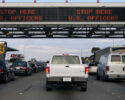Podcasts
Today historian Rick Britton talks with Les Sinclair about: The Fourth of July During the Civil War
During the Civil War both sides celebrated the Fourth. In 1862, on the Fourth of July, it was reported in the New York Times that Confederate Gen. Thomas J. “Stonewall” Jackson had been killed. (And, of course, this story was false, Jackson lived to fight many another day. He was mortally wounded at the Battle of Chancellorsville in May of 1863.) For the Fourth of July in 1862, New York City put on a pyrotechnic gala, a recreation of the epic naval battle between the Monitor and the Virginia, the powerful iron-armored monster that had been reconstructed atop the hull of the burned U.S.S. Merrimac. In March, these two ships had engaged in the first pitched battle between ironclad vessels. The Times claimed that tens of thousands gathered to watch the New York harbor spectacle, which was wildly cheered and ended, of course, with the Federal Monitor victorious.
In the North, the following Independence Day, in 1863, was truly a “Glorious Fourth.” It witnessed two great Federal victories. In the Western Theater, the Confederate army at Vicksburg, Mississippi— just over 30,000 men under the command of Gen. John C. Pemberton, a Pennsylvanian—surrendered to Union Gen. Ulysses S. Grant on the Fourth of July. (Vicksburg’s Confederate defenders surrendered, but its Southern citizens, interestingly enough, simply refused to acknowledge their re-admittance into the Union. The Fourth of July was not celebrated in the unreconstructed city for the following eighty-one years! It was World War II victories that finally got the people of Vicksburg back into the Fourth-of-July swing.)
Meanwhile, in the Eastern Theater, the Battle of Gettysburg was fought in south-central Pennsylvania on July 1st, 2nd, and 3rd. After the disastrous combat on the 3rd of July—Pickett’s Charge—Confederate Gen. Robert E. Lee began his long trek back to Virginia on the next day, the Fourth. Even the sometimes sullen Abraham Lincoln was cheered by the news. One reported noted that, when the chief executive received the news, “The countenance of President Lincoln, never very demonstrative, beamed all over with gladness; and the sun that rose that day, on many fears, went down in glory on the universal idea that the Union was saved.”
Also: On Wednesday the 12th, at 6 p.m., architectural historian Ed Lay will be speaking on the early history & architecture of Lexington, Virginia. It’s FREE & open to the public!









